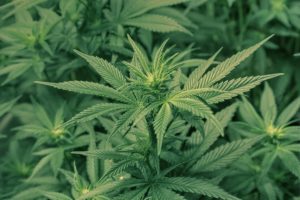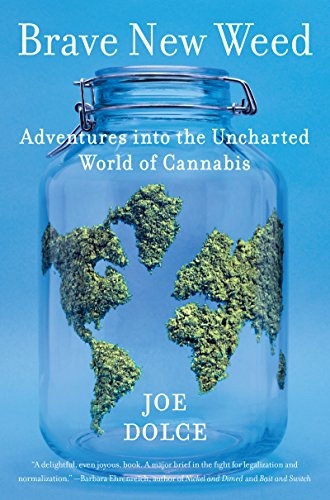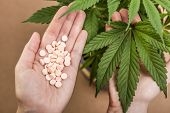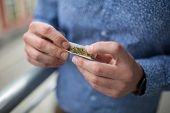 This week, I’m staying with my recent blog themes of flowers, plants, backyards and gardens, but I’m taking a step beyond neatly manicured flower beds, and venturing into the weed. That’s correct: weed, singular — as in marijuana, cannabis, ganja, pot. That’s because it seems that inch by inch, step by step, New York, the state that has been my home for decades, is moving towards legalizing recreational marijuana.
This week, I’m staying with my recent blog themes of flowers, plants, backyards and gardens, but I’m taking a step beyond neatly manicured flower beds, and venturing into the weed. That’s correct: weed, singular — as in marijuana, cannabis, ganja, pot. That’s because it seems that inch by inch, step by step, New York, the state that has been my home for decades, is moving towards legalizing recreational marijuana.
Heartening Report
Earlier this month the New York State Department of Health issued a 75-page report on marijuana and concluded that “the positive effects of a regulated marijuana market in New York State outweigh the potential negative impacts.” The report also recommended expunging the convictions of low-level marijuana offenders. That would affect the majority of almost a million individuals busted over the last 20 years and saddled with convictions which have almost certainly ruined their lives. New York Governor, Andrew Cuomo, running for re-election this year, appeared to “embrace” elements of the report.
While it’s heartening to read that the state health department has come round to the view that marijuana has health benefits, and none of the negative impacts of prescription painkillers (opioids which often lead to addiction to heroin and death) the state health department is a latecomer on the scene.
Best Weed Book
 I was more impressed by a book which I read almost eighteen months ago. I blogged about it back then, and now that the book is available in paperback and as an e-book, I’m republishing an updated version here:
I was more impressed by a book which I read almost eighteen months ago. I blogged about it back then, and now that the book is available in paperback and as an e-book, I’m republishing an updated version here:
Joe Dolce, the author of the terrific tome, Brave New Weed subtitled Adventures into the Uncharted World of Cannabis, begins by setting out the conundrum which has perplexed me (a Sixties flower child who once enjoyed hard liquor and tobacco) and those members of my generation who have for decades resisted lighting up a joint.
Namely: “If pot is as benign as its adherents claim, and such a miraculous and versatile medicine on top of that, how did it acquire such a bad rap?”
Dolce, a journalist and editor (and former editor-in-chief of the Star, a magazine where I also once toiled) presents a footnoted, well-documented narrative which traces the history of the use and health benefits of cannabis going back 10,000 years.
He also includes interviews and observations from a trip to Israel where 20,000 persons are participating in the world’s largest state-run medical cannabis program. Twenty doctors can legally prescribe cannabis, and eight tightly monitored grows distribute it on-site, through home deliveries and in dispensaries and hospitals. At Tel Aviv’s Ichilov Hospital, Dolce spoke to Dr. Bereket Schiff-Keren, a pain specialist who has prescribed cannabis to more than 1,500 patients. She told him: “Cannabis treats every pain.”
Pain in the Golden Years
“Half of the people in their ‘golden years’ suffer joint or muscle pain,” she says in the book. “Fifteen hundred patients over ten years have taught me that cannabis is useful in most cases.”
Dolce also interviewed doctors and professors of neuroscience at UCLA and Ohio State University who told him that their studies in cell cultures and animal models have shown the medical benefits of anti-inflammatory THC ( the main cannabis ingredient) in inhibiting the growth of certain cancers and slowing degeneration in aging brains.
Not Lethal
 So why does cannabis remain federally classified as a Schedule I (no medical benefit and potentially lethal) narcotic when, according to the National Institutes of Health and National Institute on Drug Abuse there were zero deaths from cannabis overdose between 2001 and 2014? A fact seemingly even more outrageous when opioid pain relievers and prescription drugs classified as schedule II or III drugs have caused thousands upon thousands of overdose deaths during the same period.
So why does cannabis remain federally classified as a Schedule I (no medical benefit and potentially lethal) narcotic when, according to the National Institutes of Health and National Institute on Drug Abuse there were zero deaths from cannabis overdose between 2001 and 2014? A fact seemingly even more outrageous when opioid pain relievers and prescription drugs classified as schedule II or III drugs have caused thousands upon thousands of overdose deaths during the same period.
War on Pot

Dolce’s short answer is: “80 years of propaganda, woolly science and high moral dudgeon […] The government has succeeded magnificently sowing first fear and then confusion… by issuing claims unsupported by evidence and twisting science to [its] own ends.” He references, as an example, a study commissioned by President Richard Nixon in 1971 on the dangers of marijuana.
The final report based on the study, was four thousand pages long, and is considered the most comprehensive study of cannabis in American history. It concluded that punishment for marijuana was more harmful than the drug itself; it recommended decriminalizing personal possession, and moving it from a Schedule I narcotic to Schedule III.
Nixon disavowed the findings, and ignored every recommendation, thus keeping the truth about cannabis from the American media and public.
Big Pharma Has Its Say
Dolce also points to the fact that vocal anti-pot groups are supported and funded by Big Pharma ( or, as I call them, the merchants of death.) He writes: “the two largest corporate funders of these anti-legalization groups are Purdue Pharma and Abbott Laboratories, the makers of OxyContin and Vicodin –opioid painkillers which are the “most addictive drugs known to man.”
Looking Forward
 Dolce nevertheless allows himself to look forward to the time — coming soon hopefully — when this country goes beyond mere legalization of the “agreeable weed” and seriously begins exploring its wellness and therapeutic effects, and the “potential power of cannabinoids on artistic expression.” To this end he has provided , at the very conclusion of the book, a checklist of how to use cannabis in the 21st century.
Dolce nevertheless allows himself to look forward to the time — coming soon hopefully — when this country goes beyond mere legalization of the “agreeable weed” and seriously begins exploring its wellness and therapeutic effects, and the “potential power of cannabinoids on artistic expression.” To this end he has provided , at the very conclusion of the book, a checklist of how to use cannabis in the 21st century.
Smoking a joint or ingesting it in some other acceptable form in a state which has legalized, or decriminalized the use of recreational pot was on my “bucket” list after reading this book. So, I noted, and followed the Dolce pointers which made the most sense to me:
Rules for A New Generation
- Pot is dose-dependent. Know/learn the dose that makes you happy.
- Get to know your terpenes (the smell molecules that determine the type of high you will experience)
- Smoke a puff or two; wait a couple of minutes and evaluate the direction things are heading since cannabis is “the mirror that magnifies” what’s already going on in your mind
- Do What You Know in an enhanced state. Save learning new activities for another time.
- With edibles, make some test runs, ingest a known, specified amount, wait one-two hours to evaluate.
My Experience So Far
Non-medical/scientific subjective conclusions so far: No artistic benefits yet, but an incredible, uninterrupted night’s sleep each time, (especially when combined with a glass of wine) — hence, a cure for the most underreported chronic condition I hear about from my contemporaries these days.
Photo Credits: top, eggrole at visualhunt.com, bigstockphoto.com
A very interesting post, thanks Joanna.
I do have some reservations about pot, but I don’t have any doubts about legalization. From observation in New York City and elsewhere, it’s in such widespread use that not legalizing it simply brings otherwise normal citizens into conflict with the law. And the reservations I do have about pot would be best addressed by a proper regulatory framework for production, classification and use, not by prohibition. I say bring it on.
Thank you for reading and commenting, Mike. I’m happy you agree with legalization. I say it’s about time especially since they’ll be able to do more and better research into marijuana as a painkiller. Maybe a step towards putting a dent in the profits of those merchants of death/opioid manufacturers.
Nicely done, Joanna. Smoked a lot of pot in the late sixties. I remember plenty of barfights among drunks but rarely any fights at pot parties. The last thing most people want to do when high is become violent. Much rather watch a movie and eat a pizza.
Exactly. Who would you rather meet if you’re out on your own late at night – a bunch of violent drunks on their way home, or some laid-back stoners looking for an all-night grocery. (Although in the latter case, I suppose you might get eaten.)
You’re right, Mike. Mellow is definitely part of that stoner persona, and much, much more acceptable and agreeable than a mean drunk.
I’m so happy you enjoyed the blog, Greg. I wish I’d known about your “sixties past” when we met at the Algonkian workshop, haha!!!!!